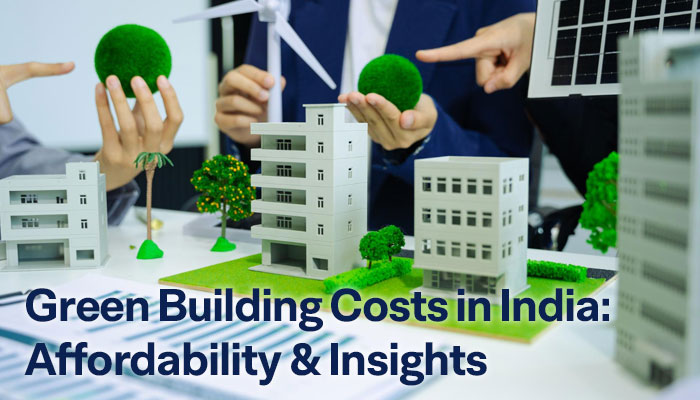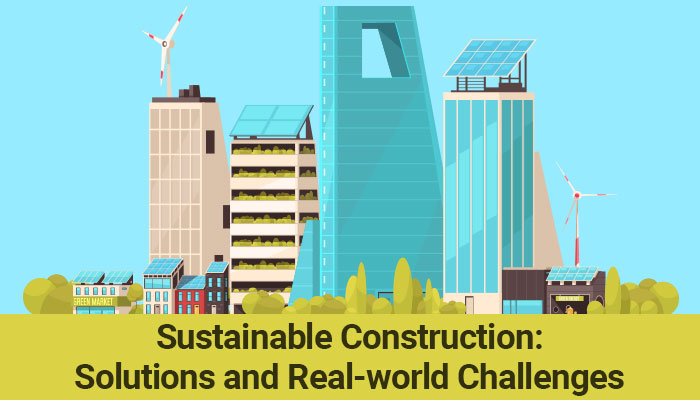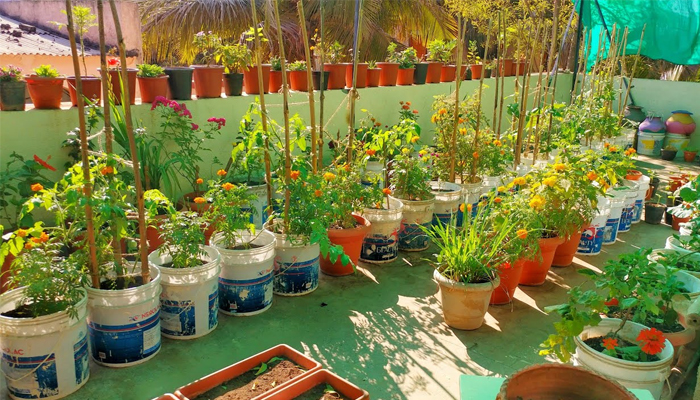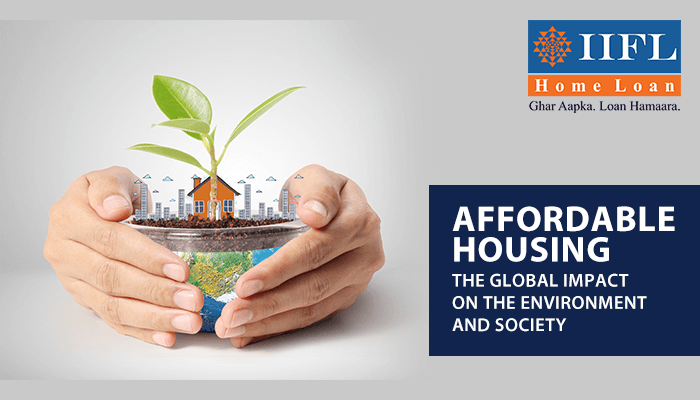Green Retrofitting: Turning Existing Property into ‘Green’ Buildings?
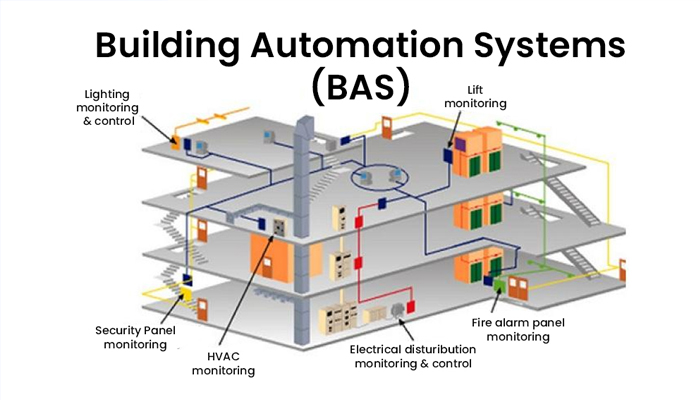
Green retrofitting involves the conversion of an existing property into a ‘green’ building while considering energy, water, materials, and cost concerns in order to improve occupant well-being, environmental performance, and financial returns.
Retrofits have gained a lot of popularity over the past few decades. Retrofitting is not a simple process, so it is necessary to plan changes considering the available financial resources and predetermined performance requirements. Various stakeholders are involved in existing buildings. Therefore, the fundamental tenet of any sustainability project is simplicity and adaptability.Green Rating for Integrated Habitat Assessment (GRIHA) for Existing Buildings rating is an integrated tool to assess the performance of existing buildings. Buildings with a ‘green’ rating will have increased thermal and visual comfort, enhanced water, and energy efficiency, and reduced operational and maintenance costs.
7 ‘Green’ Retrofit Methods for Existing Buildings
-
Microclimatic Impact
For tropical regions, a west or south-west facing building must be minimised in order to mitigate exposure to harsh sun and keep the interiors cool naturally. Passive solar design includes appropriately placed fenestration on building envelopes. Horizontal shading devices can be used on south elevations whereas vertical louvers can be used on western facades.
25-50% of the total site surface visible to sky, including building roofs, can be soft paved, covered with high reflectance surfaces such as white mosaic tiles/slate/terracotta, shaded by trees/vegetated pergolas/solar panels, or a combination of these strategies. This will reduce urban heat island effect and reflect harmful sun rays.
Bicycles, electric vehicles, pooled vehicles, shuttle services can be used for travelling to nearby services like grocery stores, bank/ATM, park, metro station, etc. to reduce carbon footprint.
-
Waste Management and Disposal
Efficient waste management systems involve source reduction, source segregation, recycling, composting, waste to energy, and other processes which can help reduce landfill waste. Reducing and reusing the amount of waste generated will require less energy and resources. Segregation of dry and wet waste at source will reduce the overall waste accumulation. Recycling materials helps fuel circular economy. Recycled materials such as recycled glass, aluminum, tile, plastic, and reclaimed lumber can be used in renovation of existing buildings. On-site composting creates nutrient-rich additive for house gardens. On-site treatment should be done for wastewater, which is normally sent to sewage plants.
-
Energy Efficiency and Renewable Energy Utilisation
Insulation is of utmost importance because heating and cooling account for 50% of building energy consumption. Air leaks around windows, doors and duct work are responsible for energy loss. Green insulation such as foam injection, blown-in attic insulation, and use of old and used materials like denim and newspaper can be used for insulating walls, floors and ceilings. Another way to reduce electricity bill is to install a programmable thermostat which allows the HVAC system to work when it reaches the designated temperature. HVAC or Heating, ventilation, and air conditioning system controls the temperature, humidity, and purity of the air in an enclosed space. A high efficiency, Energy Star rated HVAC system must be properly installed.
Regular maintenance makes electrical equipment more efficient. A refrigerator draws less power if its backside coils are dust-free. Clean filters prevent excessive energy consumption and fire accidents. Incandescent bulbs should be replaced with LED and CFL bulbs for a longer life, greater efficiency, and fewer toxic metals. Smart power strips save energy by sensing when a device is in active use and cutting power when in standby. Solar power can bring down energy consumption and supply excess energy to the power grid.
-
Water Conservation and Performance
Using low-flow plumbing fixtures help to conserve water and reduce water bills. Water efficiency can be improved by switching to washing machines and dishwashers that use less water and electricity. Additionally, installing a filter on the washing machine and faucets will keep microplastics out of the drinking water. Rainwater harvesting and xeriscaping are alternative sources of water for irrigation and sanitation purposes. Tankless water heaters can reduce energy use and storage needs. Through asset digitisation of the cooling tower and chiller for water conservation, inexpensive Internet of Things (IoT) retrofits can offer the necessary knowledge.
-
Achieving Indoor Comfort and Maintaining Good Indoor Air Quality (IAQ)
Incoming solar radiation, energy use, glare, and thermal comfort can all be managed with the use of electrochromic smart glass, electronic smart glass, and high-performance windows. Interior design can make use of organic products made from renewable resources like bamboo, cork, and linoleum. The easy breakdown of organic and low-VOC (Volatile Organic Compounds) paints without the production of pollutants helps to maintain optimum indoor air quality.
-
Universal Accessibility and Environmental Awareness
Buildings can incorporate ramps and elevators for easy accessibility. Modern detergents and high-efficiency washers can thoroughly clean garments without requiring hot water. Toxins are kept away from skin, indoor air, and water by using natural cleaning products. Less energy is used while drying clothes the traditional way, outside on a clothesline. A green roof can cut a building's energy needs and decrease storm water runoff. Due to their reduced embodied energy, locally produced building materials like rammed earth brick and wood can be brought back into usage in the sustainable construction technology sector.
-
Adoption and Implementation of Innovation and Technology
In order to meet current building codes, green building retrofits can provide real-time IAQ monitoring in an existing property. Real-time visibility of the operating state of various building components, such as the mechanical, electrical, and plumbing systems, can encourage preventative maintenance as opposed to emergency repairs at every level of facility management. Continuous commissioning assures optimum running of HVAC systems. LED fixtures with IoT occupancy sensors can be used to cut off unnecessary lighting and gauge how effectively places are being used to decide whether the entire area needs to be redesigned.
Conclusion
Retrofit methods provide quantifiable value to existing properties to make them ‘green’ buildings. However, their application should be viewed collectively. IoT retrofits can be implemented gradually and for a lot less money than updating current infrastructures. Cloud-based IoT solutions can provide real-time visibility to everyone at workplace. Building Automation Systems (BAS) retrofits at a low-cost offers the quickest route to a ‘greener’ future.
Sources:
"LEED for Existing Buildings: Operations & Maintenance", USGBC, 2008.; "EnerPHit - the Passive House certification for retrofits", Passipedia.; "Green Globes for Existing Buildings", Green Building Institute
“GRIHA for Existing Buildings”, GRIHA Council and The Energy and Resources Institute, 2017
https://blog.senseware.co/top-10-retrofit-methods-for-sustainable-buildings
Tags
Disclaimer: The information contained in this post is for general information purposes only. IIFL Home Finance Limited (including its associates and affiliates) ("the Company") assumes no liability or responsibility for any errors or omissions in the contents of this post and under no circumstances shall the Company be liable for any damage, loss, injury or disappointment, etc. suffered by any reader. All information in this post is provided "as is", with no guarantee of completeness, accuracy, timeliness, or of the results, etc. obtained from the use of this information, and without warranty of any kind, express or implied, including, but not limited to warranties of performance, merchantability, and fitness for a particular purpose. Given the changing nature of laws, rules, and regulations, there may be delays, omissions, or inaccuracies in the information contained in this post. The information on this post is provided with the understanding that the Company is not herein engaged in rendering legal, accounting, tax, or other professional advice and services. As such, it should not be used as a substitute for consultation with professional accounting, tax, legal or other competent advisers. This post may contain views and opinions which are those of the authors and do not necessarily reflect the official policy or position of any other agency or organization. This post may also contain links to external websites that are not provided or maintained by or in any way affiliated with the Company and the Company does not guarantee the accuracy, relevance, timeliness, or completeness of any information on these external websites. Any/ all (Home/ Loan Against Property/ Secured Business Loan/ Balance Transfer/ Home Improvement Loan/ NRI Home Loan/ Home Loan for Uniformed Services) loan product specifications and information that may be stated in this post are subject to change from time to time, readers are advised to reach out to the Company for current specifications of the said (Home/ Loan Against Property/ Secured Business Loan/ Balance Transfer/ Home Improvement Loan/ NRI Home Loan/ Home Loan for Uniformed Services) loan.
 Login
Login






